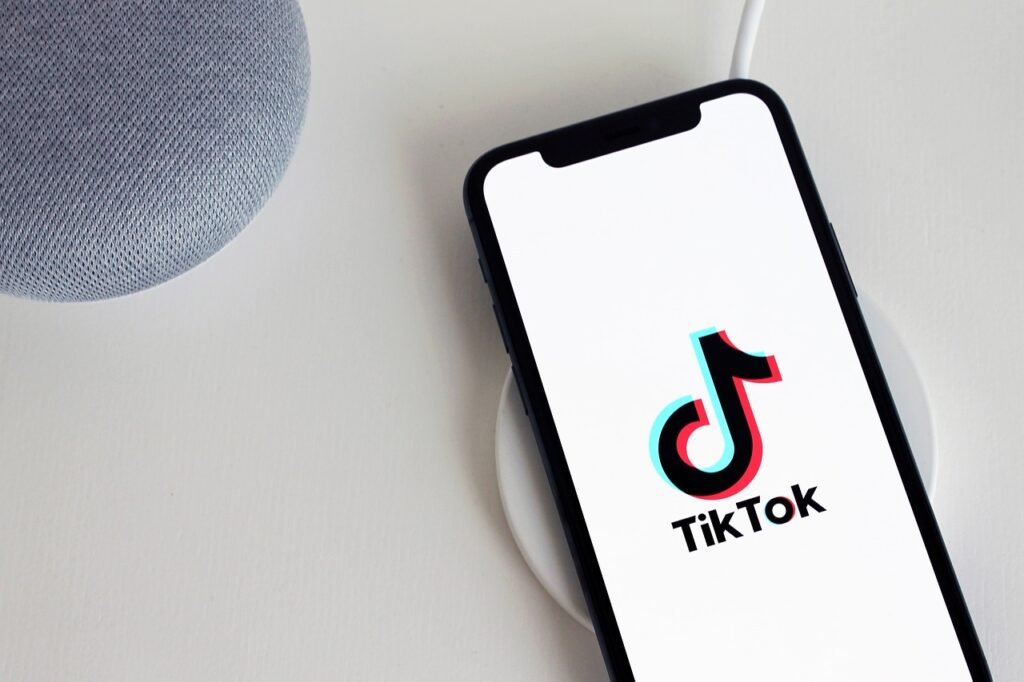Lead scoring is one of the most effective ways to streamline sales and marketing efforts, focusing time and resources on the leads most likely to convert. But when lead scoring models are inaccurate, they don’t just waste resources—they actively hurt ROI. Poorly designed models can lead to valuable leads being ignored, while unqualified prospects eat up time and budget.
In this article, we’ll dive into why lead scoring models often miss the mark, explore ways to refine your approach, and give you actionable strategies to build a more accurate, efficient model that maximizes ROI.
1. Understanding Lead Scoring and Its Role in Your Sales Funnel
Lead scoring is the process of assigning a value to each lead based on their likelihood to convert. Typically, this score is calculated from factors like demographics, behavior, engagement, and firmographics (in B2B contexts). High scores indicate leads who are ready to buy, while low scores suggest prospects who are less likely to convert at the moment.
An accurate lead scoring model aligns sales and marketing efforts with the most promising prospects, making the sales funnel more efficient and productive. However, when the model is flawed, high-potential leads can slip through the cracks, while unqualified leads clog up the sales pipeline. This misalignment drains resources, erodes morale, and eats into ROI.
Action Insight: Start by auditing your current lead scoring model. Are you basing scores on outdated or overly simple criteria? Begin by identifying where your current model may fall short.
2. The High Cost of Inaccurate Lead Scoring Models
Inaccurate lead scoring doesn’t just waste time—it directly impacts revenue. When sales teams pursue unqualified leads based on a flawed score, they’re wasting hours that could be spent closing actual sales. Worse, prioritizing the wrong leads can demoralize your sales team, leading to burnout and reducing overall efficiency.
For instance, if your scoring model heavily weights website visits but ignores actions like demo requests, you may end up prioritizing curious browsers over buyers with real intent. This misallocation of resources doesn’t just impact your bottom line; it leads to missed opportunities and lower team morale.
Action Insight: Identify the gaps in your current lead scoring. Regularly review feedback from sales teams about lead quality and adjust your model to better reflect the types of leads that convert.
3. Why One-Size-Fits-All Scoring Doesn’t Work
No two businesses have identical sales processes, and a one-size-fits-all lead scoring approach often fails to capture what really matters. Factors like industry, product type, and sales cycle length all impact how likely a lead is to convert. For example, in a B2B tech company, high-quality leads may be those who engage with technical whitepapers, while in an eCommerce setting, repeat site visitors may hold more weight.
Creating a customized lead scoring model that reflects your business’s unique characteristics leads to better alignment between scoring and conversion potential. When your model is tailored to your actual customer journey, sales and marketing teams can focus on leads that matter.
Action Insight: Tailor your lead scoring criteria to match your specific industry, product, and audience. Consider factors like content engagement, buying signals, and even customer service interactions to create a scoring model that reflects your real sales process.
4. Balancing Explicit and Implicit Scoring for Better Accuracy

Effective lead scoring combines both explicit and implicit data. Explicit data includes observable characteristics like job title, company size, or purchase history, while implicit data encompasses behavioral insights like website visits, email opens, and content downloads. Relying solely on one type of data can skew your results. For instance, demographic scoring without behavioral insights might prioritize people with the “right” title but overlook their actual interest level.
Combining explicit and implicit data provides a fuller picture of a lead’s potential, improving your ability to score them accurately. A balanced approach lets you assign higher scores to leads who not only fit your ideal buyer profile but also demonstrate active engagement.
Action Insight: Evaluate your current scoring model to ensure it includes both explicit and implicit data. Use CRM and analytics tools to track lead behavior and include these behaviors in your scoring criteria to get a holistic view of lead quality.
5. Using Engagement Thresholds to Weed Out Low-Quality Leads
Not all interactions are equal. A single website visit doesn’t have the same weight as a product demo request or multiple whitepaper downloads. Without engagement thresholds, your model may score leads based on superficial activity rather than true buying intent. Setting engagement thresholds ensures that only leads with substantial activity make it to the top of your pipeline.
For example, a threshold could be set so that leads must visit your site multiple times or engage with at least three pieces of content to qualify as high-quality. This helps filter out “window shoppers” and focuses attention on those with genuine interest.
Action Insight: Define minimum engagement thresholds in your lead scoring model. Establish what qualifies as meaningful engagement, and adjust your scoring accordingly. This ensures your team prioritizes high-quality leads who are more likely to convert.
6. Incorporating Intent Data to Identify High-Potential Leads
Intent data—information on online behavior that indicates purchase intent—can significantly improve the accuracy of your lead scoring model. Intent signals, such as searching for specific product terms, engaging with competitor content, or reading multiple articles on a topic, can indicate a lead’s readiness to buy.
Intent data offers insights that go beyond your website’s engagement, allowing you to score leads based on their broader online behavior. Integrating intent data into your model helps you identify leads who are actively in the buying process, improving conversion rates and enhancing ROI.
Action Insight: Incorporate intent data from third-party providers or your CRM to improve lead scoring. Weight intent-based actions heavily in your model to ensure high-potential leads receive the attention they deserve.
7. Setting Clear Scoring Ranges for Accurate Lead Qualification

One of the most common mistakes in lead scoring is a vague scoring system that makes it difficult to categorize leads accurately. Without clear scoring ranges, it’s easy to misinterpret lead quality, leading to inconsistent qualification and missed opportunities. Setting distinct scoring tiers—like low, medium, and high priority—provides clarity and helps sales teams make faster decisions.
For instance, scores from 0-20 could indicate low interest, 21-50 medium interest, and 51-100 high interest. This tiered system enables your sales team to focus on leads with the highest potential, optimizing resources and reducing wasted time.
Action Insight: Define clear scoring ranges in your lead scoring model. Regularly update these ranges based on conversion data, ensuring that scores align with actual outcomes. This structured approach improves lead qualification accuracy, making sales teams more efficient.
8. Revisiting Scoring Models Regularly to Reflect Market Changes
Markets evolve, and so do buyer behaviors. A scoring model that worked last year may not be relevant today. For example, economic shifts, industry trends, or new product lines can all influence what constitutes a “qualified” lead. If you’re not updating your lead scoring model regularly, you risk relying on outdated assumptions that hurt your ROI.
A proactive approach ensures your model reflects current market realities. Revisiting your scoring model every six months allows you to adapt to changes, keeping your scoring accurate and your sales pipeline healthy.
Action Insight: Set a calendar reminder to review and adjust your lead scoring model twice a year. Consult with your sales and marketing teams to incorporate recent trends or new customer insights, ensuring that your scoring remains accurate and reflective of current market dynamics.
9. Analyzing Conversion Data to Validate and Improve Scoring
A lead scoring model is only as good as its ability to predict conversions. If high-scoring leads aren’t converting, it’s a clear sign your model needs adjustment. Regularly analyzing conversion data lets you see if your scoring is accurately reflecting purchase likelihood. This insight allows you to fine-tune your scoring factors, ensuring that high scores correlate with high conversion rates.
For instance, if you find that leads who engage with product demos are more likely to convert, you can adjust your model to give higher scores to demo requests. This continual refinement process makes your model more accurate, improving overall ROI.
Action Insight: Regularly review conversion rates for each scoring tier. Identify which behaviors or characteristics correlate with successful conversions and adjust your scoring model accordingly. This data-driven approach ensures that your model stays relevant and effective.
10. Using AI and Machine Learning for Smarter Lead Scoring
Machine learning can elevate lead scoring by analyzing vast amounts of data and identifying patterns that humans might miss. AI can track a lead’s behavior across channels, analyzing factors like engagement, demographics, and historical data to predict conversion likelihood. This approach removes much of the guesswork, enabling a dynamic scoring model that adapts as new data is added.
AI-based scoring is especially valuable for businesses with large volumes of leads, as it can help prioritize leads in real-time. By leveraging AI, you gain a more accurate model that continuously improves as it learns from new patterns, boosting lead conversion rates.
Action Insight: Consider integrating AI-driven lead scoring tools, especially if you handle a high volume of leads. Tools like Salesforce Einstein, HubSpot Predictive Lead Scoring, and others can provide AI-powered insights that refine your model over time, increasing scoring accuracy and maximizing ROI.

Related: Check out our free SEO suite

11. Involving Sales Teams in the Lead Scoring Process
Sales teams have firsthand insights into which types of leads are most likely to convert. If your scoring model is designed solely by marketing, it may miss valuable input from those on the front lines. Including sales in the lead scoring process improves accuracy, as they can provide real-world feedback on lead quality and relevance.
For instance, if sales reps notice that certain behaviors (like high email engagement) don’t always correlate with purchase interest, you can adjust your model accordingly. This collaborative approach ensures the scoring model reflects actual sales outcomes, making it a powerful tool for both teams.
Action Insight: Establish regular meetings between sales and marketing to discuss lead quality and scoring. Use feedback from sales teams to adjust scoring criteria, ensuring alignment and maximizing the model’s effectiveness.
12. Establishing a Feedback Loop to Continuously Improve Scoring
A lead scoring model is not a one-time setup; it needs regular adjustments based on performance feedback. Creating a feedback loop where both sales and marketing can share insights ensures that the model is continuously refined. This ongoing process allows you to catch issues early, make necessary adjustments, and keep the model aligned with conversion data.
For example, if sales teams consistently report that certain high-scoring leads rarely convert, it’s a sign to re-evaluate the weighting of those factors. A feedback loop keeps your scoring relevant, accurate, and aligned with real outcomes.
Action Insight: Set up a structured feedback loop for your lead scoring model. Encourage both sales and marketing teams to report on lead quality regularly and implement changes based on their insights. This continuous improvement approach ensures your scoring model adapts as needed, enhancing ROI.
13. Leveraging Multi-Channel Data for a Comprehensive Lead View
Many businesses gather lead data from a range of sources—social media, website interactions, email engagement, and even offline events. But if your lead scoring model only considers data from one or two channels, you’re likely missing the full picture. A lead who’s highly engaged on social media but hasn’t interacted with your emails may still be a high-potential buyer. By incorporating multi-channel data into your model, you can better gauge a lead’s overall interest and intent.
For example, combining email engagement data with website visits, social media activity, and event attendance gives you a richer understanding of lead intent. A lead with multiple high-engagement touchpoints across channels should have a higher score than one with sporadic engagement on only one platform.
Action Insight: Ensure your lead scoring model integrates data from all relevant channels. Use a CRM or customer data platform (CDP) that can pull multi-channel insights into one view, providing a comprehensive picture of lead engagement. This multi-faceted approach prevents gaps in your scoring model, improving its accuracy and overall impact on ROI.
14. Avoiding Over-Scoring Based on a Single Activity

One common mistake in lead scoring is assigning high scores to leads based on a single action, such as downloading an eBook or watching a webinar. While these activities indicate interest, they don’t always correlate with intent to buy. By over-weighting a single action, you risk inflating scores for leads who may not be ready to convert, leading to wasted time and resources.
Instead, use a balanced scoring approach that considers the depth and variety of actions. A lead who engages consistently over time, such as downloading content, visiting the site multiple times, and attending a webinar, should receive a higher score than a lead who takes only one action.
Action Insight: Avoid assigning disproportionate scores to single activities. Set thresholds for engagement that require multiple actions over a period of time to reach higher scores. This approach prevents premature prioritization of leads and ensures your sales team focuses on those who show sustained interest.
15. Utilizing Negative Scoring to Filter Out Unqualified Leads
Negative scoring is an often overlooked but powerful component of effective lead scoring. Not all engagement is a positive buying signal; for instance, job seekers, students, or people downloading free content with no intention of purchasing may exhibit high engagement but low buying intent. By assigning negative scores to certain behaviors—like unsubscribing from emails, visiting the careers page, or repeatedly interacting only with free resources—you can filter out these low-quality leads.
Negative scoring keeps your pipeline clean and ensures your team’s time is spent on leads with genuine interest in your product or service, optimizing resources and improving ROI.
Action Insight: Define clear criteria for negative scoring in your model. Regularly review the types of behaviors that correlate with low intent to refine negative scoring parameters. Incorporating negative scoring reduces clutter in your sales funnel and helps your team focus on high-value prospects.
16. Personalizing Outreach Based on Lead Scores
Lead scores aren’t just for prioritization—they’re a valuable tool for personalizing outreach. Leads with different scores may be at various stages in their buying journey, requiring tailored communication. High-scoring leads might be ready for a sales call or product demo, while lower-scoring leads could benefit from nurturing through targeted content.
For example, a lead with a high score based on repeated visits and content downloads might be sent directly to sales, while a mid-range lead receives educational resources to build interest. Personalizing outreach based on scores maximizes engagement and increases conversion likelihood, directly impacting ROI.
Action Insight: Develop a lead nurturing strategy that matches your scoring tiers. Automate personalized outreach through email sequences or targeted ads based on lead scores. This customized approach aligns communication with lead intent, creating a smoother path to conversion and maximizing ROI.
17. Revisiting Lead Scoring for Different Buyer Personas

Different buyer personas often have distinct behaviors and engagement patterns. A scoring model that works well for one persona may not accurately capture the intent of another. By customizing your lead scoring model for different personas, you can better prioritize leads who fit each group’s unique buying journey.
For instance, if you target both individual consumers and corporate decision-makers, their engagement behaviors will differ. Corporate leads may spend time researching multiple resources, while individual buyers might engage directly with product demos. Adjusting your scoring model to reflect these differences ensures each persona is scored accurately, improving qualification and conversion.
Action Insight: Create lead scoring models tailored to each of your primary buyer personas. Adjust scoring criteria to reflect the behaviors unique to each persona, such as resource engagement for corporate buyers or demo requests for individual consumers. Persona-based scoring improves targeting and maximizes ROI by aligning outreach with specific buying patterns.
18. Implementing Lead Decay to Maintain Relevance
Lead scoring is most effective when it reflects real-time interest. If a lead’s engagement occurred months ago without recent activity, their score may no longer be relevant. Implementing lead decay—gradually lowering scores over time if a lead becomes inactive—keeps scores accurate and up-to-date. This approach ensures that only actively interested leads remain prioritized.
For example, a lead who downloaded resources months ago but hasn’t engaged recently should gradually receive a lower score, allowing more active leads to rise to the top. Lead decay prevents “stale” leads from blocking the pipeline and keeps focus on those showing current interest.
Action Insight: Set lead decay parameters in your scoring model. Define a time frame for inactivity (e.g., 60 or 90 days) after which scores begin to reduce. This dynamic approach maintains lead relevance, ensuring sales teams focus on high-potential leads and maximizing ROI.
Final Thoughts: Elevating ROI Through Accurate Lead Scoring
An accurate lead scoring model can transform your sales funnel, focusing resources on high-potential leads and reducing wasted time on low-quality prospects. But achieving this requires careful planning, continuous updates, and a data-driven approach. By combining both explicit and implicit data, setting clear scoring thresholds, and involving AI, you can create a model that effectively prioritizes leads and supports sustainable growth.
Regular analysis, collaboration with sales teams, and a feedback loop ensure that your scoring model remains relevant and aligned with your business’s current realities. When lead scoring works as it should, it doesn’t just improve conversion rates—it also boosts morale, aligns sales and marketing, and maximizes ROI. With these tactics, your lead scoring model can become a powerful asset that drives efficiency gains and keeps your business ahead in an increasingly competitive landscape.
READ NEXT:
- Are Vanity Metrics Killing Your Marketing Efficiency? Here’s What to Track Instead
- Pinpointing Digital Marketing ROI: Why Your Metrics Aren’t Telling the Full Story
- Unlocking Real ROI in Digital Marketing: The Hidden Costs Draining Your Budget
- How Misaligned Marketing Funnels Are Blocking Your ROI Potential
- Best Digital Marketing Agency In Santa Ana, California
- Best Digital Marketing Agency In San Francisco, California






















Comments are closed.